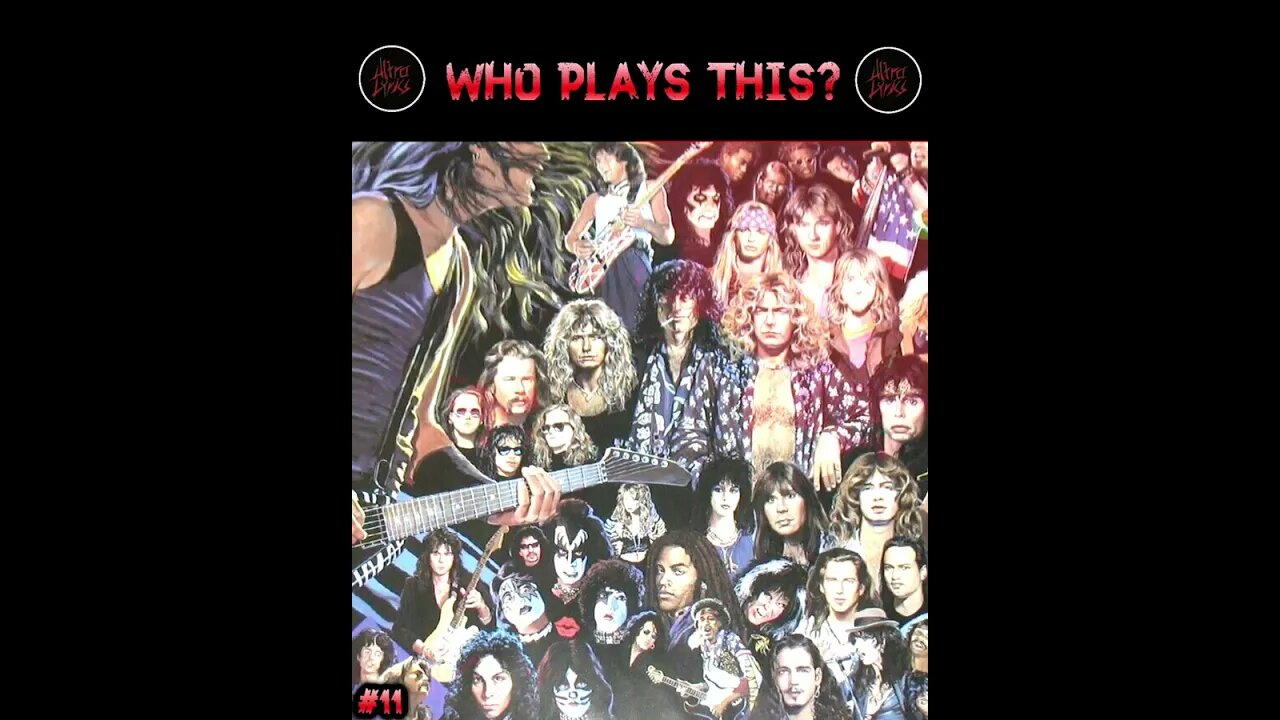Premium Only Content

WHO PLAYS THIS? 🎤🎶🎸🥁 No. 11
WHO PLAYS THIS? 🎤🎶🎸🥁 No. 11
Follow me on twitter: https://twitter.com/UltraLyrics2
Follow me on Instagram: https://www.instagram.com/ultralyrics1/
Follow me on TikTok: https://www.tiktok.com/@UCYO-HeSSM9hfPrCQsyZQ0xw
I do not own any of the contents within this video. This video is for entertainment purposes. No copyright infringement is intended. Credits for the contents go to their respective owners.
#metal #metalshorts #guitarshorts #metalclips #heavymetalshorts #mysterymusician #guitar #music #metalmusic #heavymetal #guessthatmusician #thrashmetal #groovemetal #drums #rocknroll #studio #music #musicclips #musicshorts #musicshortsvideo
Wikipedia stuff
Heavy metal (or simply metal) is a genre of rock music that developed in the late 1960s and early 1970s, largely in the United Kingdom and United States.[2] With roots in blues rock, psychedelic rock and acid rock, heavy metal bands developed a thick, monumental sound characterized by distorted guitars, extended guitar solos, emphatic beats and loudness.
In 1968, three of the genre's most famous pioneers – Led Zeppelin, Black Sabbath and Deep Purple – were founded.[3] Though they came to attract wide audiences, they were often derided by critics. Several American bands modified heavy metal into more accessible forms during the 1970s: the raw, sleazy sound and shock rock of Alice Cooper and Kiss; the blues-rooted rock of Aerosmith; and the flashy guitar leads and party rock of Van Halen.[4] During the mid-1970s, Judas Priest helped spur the genre's evolution by discarding much of its blues influence,[5][6] while Motörhead introduced a punk rock sensibility and an increasing emphasis on speed. Beginning in the late 1970s, bands in the new wave of British heavy metal such as Iron Maiden and Saxon followed in a similar vein. By the end of the decade, heavy metal fans became known as "metalheads" or "headbangers". The lyrics of some metal genres became associated with aggression and machismo,[7] an issue that has at times led to accusations of misogyny.
During the 1980s, glam metal became popular with groups such as Bon Jovi, Mötley Crüe and Poison. Meanwhile, however, underground scenes produced an array of more aggressive styles: thrash metal broke into the mainstream with bands such as Metallica, Slayer, Megadeth and Anthrax, while other extreme subgenres such as death metal and black metal became – and remain – subcultural phenomena. Since the mid-1990s, popular styles have expanded the definition of the genre. These include groove metal and nu metal, the latter of which often incorporates elements of grunge and hip-hop.
Heavy metal is traditionally characterized by loud distorted guitars, emphatic rhythms, dense bass-and-drum sound and vigorous vocals. Heavy metal subgenres variously emphasize, alter or omit one or more of these attributes. In a 1988 article, The New York Times critic Jon Pareles wrote, "In the taxonomy of popular music, heavy metal is a major subspecies of hard-rock—the breed with less syncopation, less blues, more showmanship and more brute force."[8] The typical band lineup includes a drummer, a bassist, a rhythm guitarist, a lead guitarist and a singer, who may or may not be an instrumentalist. Keyboard instruments are sometimes used to enhance the fullness of the sound.[9] Deep Purple's Jon Lord played an overdriven Hammond organ. In 1970, John Paul Jones used a Moog synthesizer on Led Zeppelin III; by the 1990s, synthesizers were used in "almost every subgenre of heavy metal".[10]
The electric guitar and the sonic power that it projects through amplification has historically been the key element in heavy metal.[11] The heavy metal guitar sound comes from a combined use of high volumes and heavy fuzz.[12] For classic heavy metal guitar tone, guitarists maintain gain at moderate levels, without excessive preamp or pedal distortion, to retain open spaces and air in the music; the guitar amplifier is turned up loud to produce the "punch and grind" characteristic.[13] Thrash metal guitar tone has scooped mid-frequencies and tightly compressed sound with multiple bass frequencies.[13] Guitar solos are "an essential element of the heavy metal code ... that underscores the significance of the guitar" to the genre.[14] Most heavy metal songs "feature at least one guitar solo",[15] which is "a primary means through which the heavy metal performer expresses virtuosity".[16] Some exceptions are nu metal and grindcore bands, which tend to omit guitar solos.[17] With rhythm guitar parts, the "heavy crunch sound in heavy metal ... [is created by] palm muting" the strings with the picking hand and using distortion.[18] Palm muting creates a tighter, more precise sound and it emphasizes the low end.[19]
Source(s): https://en.wikipedia.org/wiki/Heavy_metal_music#External_links
https://youtube.com/shorts/ZFtlGIEapjk
WHO PLAYS THIS? 🎤🎶🎸🥁 No. 11
-
 LIVE
LIVE
The Dan Bongino Show
2 hours agoThe Rock-'Em-Sock-'Em Presidency (Ep. 2409) - 01/27/2025
164,035 watching -
 LIVE
LIVE
The Rubin Report
1 hour agoStephen A. Smith Makes Makes Bill Maher Go Quiet with His Scorching Attack on Democrats
4,979 watching -
 LIVE
LIVE
Steven Crowder
3 hours ago🔴 We are So Back: How Trump Flexed American Muscle and Owned Colombia
41,698 watching -
 LIVE
LIVE
Caleb Hammer
44 minutes agoHomewrecker Ruins EVERYTHING To Steal Married Old Men | Financial Audit
175 watching -
 UPCOMING
UPCOMING
The Shannon Joy Show
49 minutes ago🔥🔥Bobby Kennedy Goes To Washington! Can He Tame The PHARMA Giant & STOP mRNA Expansion?🔥🔥
38 -
 UPCOMING
UPCOMING
Tudor Dixon
1 hour agoThe Woketopus: The Dark Money Cabal Manipulating the Federal Government | The Tudor Dixon Podcast
186 -
 UPCOMING
UPCOMING
MrBigKid
15 hours agoS&W Bodyguard 2 ... Why is it so different!?
92 -
 LIVE
LIVE
LFA TV
22 hours agoICE ICE BABY! | LIVE FROM AMERICA 1.27.25 11am
5,529 watching -
 34:58
34:58
Rethinking the Dollar
1 hour agoDeep Seek AI: The US Equities Breaking Point?
1.93K1 -
 1:15:25
1:15:25
Graham Allen
3 hours agoTrump BULLIES Colombia Into Following His Policy!! + FINALLY PETE IS CONFIRMED!
68.4K72